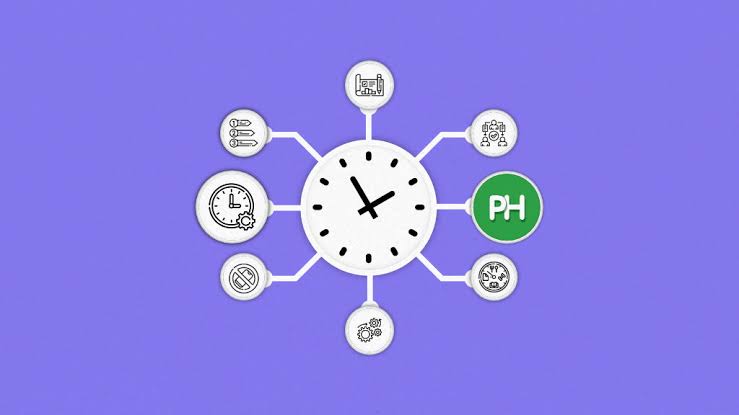Good time estimation is an important skill today. Whether you are handling personal tasks, leading a team, or juggling many duties, knowing how long tasks take helps you work better and succeed. By July 2025, with hybrid work, tight deadlines, and more digital tools, predicting your time needs can lower stress, avoid burnout, and boost results.
Many people still guess too low on task time, causing late work and last-minute rushes. Learning to estimate time well is more than being organized—it’s a way of thinking and a skill anyone can build with practice.
Break Projects Into Smaller Tasks
One of the most common mistakes people make when estimating time is thinking in broad terms. Saying a project will take “two days” is vague unless you know what specific actions are involved. Breaking a project down into smaller, well-defined tasks provides a clearer understanding of what each component entails and how long it might take.
By identifying subtasks, you can more accurately allocate time based on complexity. For instance, writing a report may involve research, outlining, drafting, editing, and formatting. Each of these steps requires a different kind of focus and may vary in duration. When you account for them separately, your overall estimate becomes much more precise.
This approach also helps you spot potential bottlenecks early. If a particular subtask appears unusually time-consuming, you can allocate extra hours or seek support in advance, which minimizes the risk of last-minute delays.
Track Time Spent on Past Activities
Another effective method for improving time estimation is to study your past work. Keeping a record of how long you actually spend on different tasks builds a valuable database of personal performance metrics. Over time, patterns begin to emerge, and you get better at predicting your future time needs.
In 2025, time-tracking tools have become more sophisticated. Apps like Toggl, Clockify, and RescueTime not only record how long tasks take but also categorize them by type and urgency. By reviewing this data weekly or monthly, you can refine your future estimates based on reality, not assumptions.
This habit also helps you identify which tasks consistently take longer than expected and where you tend to overestimate. With enough data, your guesswork becomes informed forecasting.
Consider Buffer Time for Unpredictable Delays
No matter how organized you are, unexpected interruptions happen. A colleague may request urgent help, your internet connection could falter, or a task might be more complicated than initially assumed. That’s why it’s essential to include buffer time when estimating.
A good rule of thumb is to add 15% to 25% more time to your estimate, depending on the task’s complexity and the likelihood of interruptions. For collaborative work, buffers are even more important since they account for coordination delays, feedback loops, and revisions.
In 2025, project managers are increasingly using predictive scheduling software that automatically suggests buffer times based on task history. Whether you use digital tools or manual planning, adding wiggle room keeps your timeline realistic and flexible.
Use Historical Averages for Similar Tasks
If you’ve done a task before, use the time it took as a benchmark for similar tasks in the future. Historical averages are one of the most reliable ways to estimate time because they reflect actual outcomes, not ideal scenarios.
For example, if writing a 1,000-word blog post typically takes you three hours, that’s your baseline. If a similar article requires additional research or graphics, you can adjust the estimate accordingly.
This strategy works especially well for routine responsibilities like answering emails, attending meetings, or preparing reports. The more frequently you perform a task, the more accurate your historical average becomes—and the more confident you’ll be in your scheduling.
Assess the Complexity and Learning Curve
Tasks are not created equal. Some require more cognitive effort, learning, or decision-making than others. When estimating time, it’s important to assess the complexity of the task and whether it involves new tools, unfamiliar processes, or creative problem-solving.
A task that’s new to you may take twice as long as one you’ve mastered. Be honest about your current skill level and account for the time needed to learn, experiment, or revise. In 2025, with rapidly evolving tech tools and platforms, professionals frequently encounter tasks that come with a learning curve.
Being realistic about what you don’t know—and budgeting time to figure it out—helps prevent frustration and missed deadlines. Over time, your estimates will become more precise as your experience grows.
Don’t Rely on Optimism Alone
Optimism bias—the tendency to underestimate how long tasks will take—is a major obstacle to accurate time estimation. While confidence is useful, relying too much on best-case scenarios often leads to poor planning.
To combat this, consider your worst-case and average-case scenarios, not just the ideal. Ask yourself what could go wrong and how that might affect your schedule. This isn’t about being pessimistic—it’s about being prepared.
In project management, this approach is known as three-point estimation: you consider the optimistic, pessimistic, and most likely timeframes, then average them for a more balanced prediction. This method is gaining popularity in 2025, particularly among freelancers and startups who manage tight timelines and limited resources.
Factor in Transition Time
Transition time—the minutes it takes to switch between tasks—is often overlooked but plays a significant role in productivity. After completing one task, your brain needs time to reset before fully engaging in the next.
If your calendar is packed back-to-back with different kinds of tasks, you’ll likely experience fatigue and mental clutter. In 2025, productivity experts recommend allocating 10 to 15 minutes between activities to reset your focus, hydrate, or stretch.
By recognizing this invisible time, your estimates become more accurate, and your schedule becomes more humane. You’ll also improve your ability to concentrate and avoid burnout from constant task-switching.
Get Feedback from Others
Sometimes, we’re too close to a task to estimate it accurately. In these cases, seeking feedback from colleagues, mentors, or team members can provide valuable perspective. Others may have performed similar tasks or worked on related projects and can offer time ranges based on their own experiences.
In collaborative environments, group estimation is common. Teams use planning poker or time estimation workshops to pool insights and reach a consensus on how long tasks might take. This process reduces individual bias and leads to more dependable schedules.
In 2025, many collaborative platforms like Asana, Notion, and Trello have built-in features for team-based estimation and progress tracking, making it easier to gather and compare input.
Test and Adjust Your Estimates Regularly
Time estimation is a skill that improves with deliberate practice. The only way to get better is to test your assumptions, track your results, and adjust accordingly. Start by writing down your estimated time before beginning a task, then compare it to the actual time when you’re finished.
Over time, you’ll spot where you tend to misjudge—maybe you’re always underestimating writing tasks or overestimating how long meetings take. By reflecting on these gaps, you build self-awareness and refine your internal clock.
Many professionals in 2025 keep a time estimation journal or log inside their task manager to monitor progress. This habit turns every project into a learning opportunity, helping you grow more precise and confident over time.
Use Tools and AI for Support
Lastly, don’t overlook the value of tools that can assist with time estimation. In 2025, AI-powered platforms are more advanced than ever, offering time prediction features based on task complexity, past performance, and workload patterns.
Tools like Microsoft Planner, Monday.com, and ClickUp now include AI estimators that suggest realistic timelines based on your history or industry benchmarks. While these tools aren’t perfect, they provide a useful starting point and help flag unrealistic expectations.
By combining human intuition with AI support, you get the best of both worlds—personal insight and data-backed guidance. Used together, they help eliminate guesswork and make time estimation a more reliable and strategic part of your productivity system.
Conclusion: Time Estimation Is a Learnable Skill
Accurate time estimation isn’t a gift you’re born with—it’s a habit you cultivate. In a world where every minute counts, learning how to forecast your time realistically can lead to better outcomes, reduced stress, and more fulfilling workdays. By breaking tasks down, studying your own performance, and using the right tools, you can turn time estimation from a challenge into a strength. And as of July 2025, this ability is more valuable than ever.



